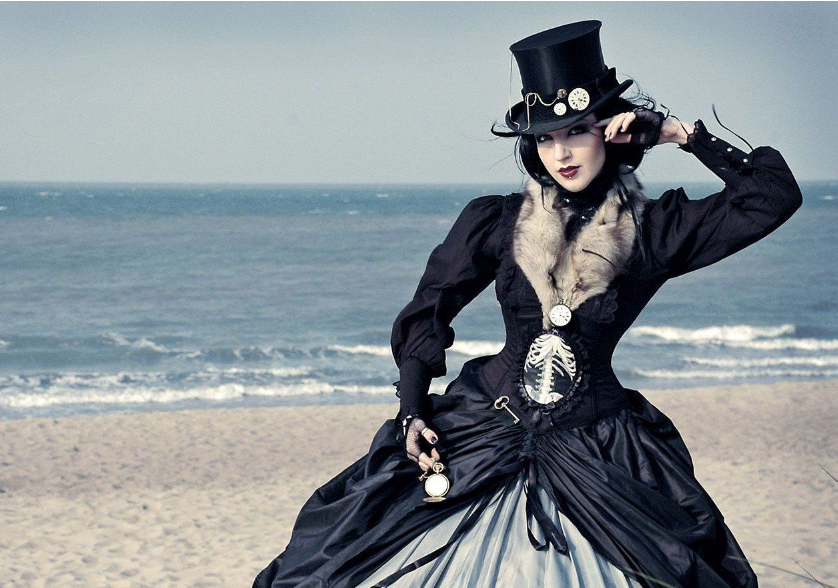
Steampunk Style
Steampunk Style by Morgan Watkins
What do you get when you combine various cultures and subcultures like gothics, sci-fi fans, cyberpunks and more? The answer is steampunk, which is defined by the Daily Dot as “a subculture encompassing fashion, music, literature, movies, DIY model-making, and gaming.” Commonly, these looks encompass both the future and the past, playing off of older designs and styles that’re revamped with an industrial twist. Still a bit fuzzy on what steampunk really is? Read on to learn more about the aesthetics, history and influence of steampunk style.
Although it wasn’t until the 1990s that the movement gained popularity, early influences date back to the 19th century French illustrator, Albert Robida, whose intricate Victorian-esque art inspired DIY fashion fanatics to reinvent 18th and 19th century looks. Around the 1970s and 80s, the growing popularity of sci-fi films and novels made steampunk flourish, along with the help 1990s grunge, goth and cyberpunk mania. Steampunk band Abney Park, who even had a song titled “Steampunk Revolution,” initially rocked futuristic trinkets and edgy costumes in music videos, inspiring countless musicians in a variety of genres to don steampunk ensembles for performances, videos and more.

(Image from https://www.chicagopopculturecon.com/steampunk/)
The foundation of steampunk fashion is, of course, based on Victorian silhouettes and shapes. Leather vests, oversized buckles, metallic trinkets, lace corsets, goggle adorned top hats, and clockwork embellished accessories are just a few staples that pair with a variety of styles and themes, like goth, fantasy, and other popular cosplay aesthetics. While most looks come from a Victorian foundation, steampunk allows individuals to create totally personalized and unique costumes that can help them express a particular vibe or identity. More is more, and the possibilities are endless.

(Image from https://blog.stylewe.com/steampunk-fashion-eccentric-esthetic-style/)
While the steampunk movement started as an underground trend adopted by so-called “outcasts” or “hipsters,” it quickly garnered popularity among mainstream pop culture. By the late 2000s, the quirky style of steampunk was being celebrated widely on television, in music and within film. Steampunk’d , for example, was a TV show featuring 10 contestants competing in challenges revolving around the construction of steampunk looks. Movies like Sherlock Holmes and Series of Unfortunate Events also took on steampunk costuming, as did artists like Panic! At The Disco in their music video for “The Ballad of Mona Lisa.” Justin Bieber even joined in on the trend for his “Santa Claus is Coming to Town” music video.

(Image from https://lieselhindmann.wordpress.com/tag/the-ballad-of-mona-lisa/ )
Steampunk isn’t just a movement in fashion, but rather a niche that allows people of all walks of life to bond over fashion and costuming. Goths, cyberpunks, sci-fi or fantasy fanatics: everyone is accepted under the steampunk umbrella, where individuals far and wide are free to get creative and express themselves however they see fit, even if that means dismantling an old alarm clock for the sake of fashion.
References:
Baker-Whitelaw, Gavia. “What Is Steampunk? A Comprehensive Beginner’s Guide.” The
Daily Dot, 15 Oct. 2016, The Daily Dot, http://www.website.com.
“Steampunk’d.” IMDb, https://www.imdb.com/title/tt4777200/plotsummary?ref_=tt_ov_pl.
